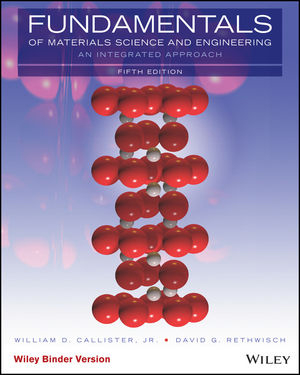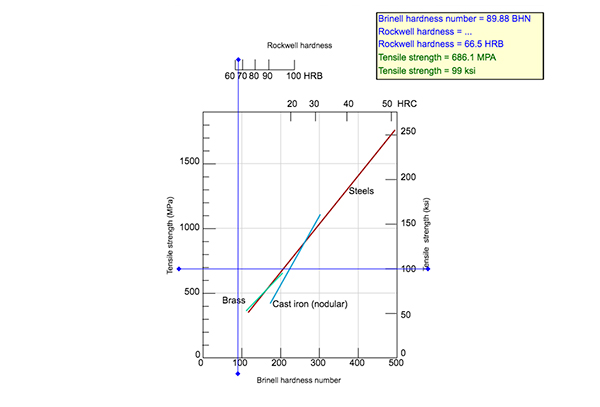
Fundamentals of Materials Science and Engineering, 5th Edition
By William D. Callister, Jr., and David G. Rethwisch
Fundamentals of Materials Science and Engineering takes an integrated approach in that one specific structure, characteristic, or property type is covered in turn for all three basic material types: metals, ceramics, and polymeric materials. This presentation permits the early introduction of non-metals and supports the engineer’s role in choosing materials based upon their characteristics. Using clear, concise terminology that is familiar to students, this program presents material at an appropriate level for both student comprehension and instructors who may not have a materials background.
The next generation of WileyPLUS for Fundamentals of Materials Science and Engineering gives instructors the freedom and flexibility to tailor content and easily manage their course to keep students engaged and on track.
Schedule a Demo Sign Up for a Test Drive Adopt WileyPLUSWant to learn more about WileyPLUS? Click Here

Interactive multimedia resources bring concepts to life.
Animated Graphs and Tutorial Videos reinforce conceptual understanding and problem solving.
- VMSE (Virtual Materials Science & Engineering), with a new interface, helps students visualize concepts related to crystal structures, diffusion tensile tests, and more. For example, it allows students to rotate unit cells in 3D to better understand molecular structures. It also includes a Database of Engineering Materials Properties that can be used for materials selection problems.
- Questions About VMSE: Students answer questions using VMSE to get the best value from its use, and instructors incentivize its use.
- Video Tutorials: “Muddy Point” videos explain tough concepts that have been identified through research as the most challenging for students.
- Basic Fundamentals: The authors present basic concepts on a level appropriate for university and college students who have completed their freshmen calculus, chemistry, and physics courses.
- Topics and Concepts: Students can fully understand concepts presented in sufficient detail without having to consult other sources.
- “Why Study?” Feature: This section opener highlights important applications of materials science engineering.
- Assignable Questions and Problems: A range of questions and problems can be assigned for practice or homework. Many of these make use of the multimedia resources and VMSE, helping students see the value in their use.
- Appendices: Properties and prices for many materials are listed to help students solve several materials selection problems that are presented during the course.
What’s New

William D. Callister, Jr. is an adjunct professor in the Department of Metallurgical Engineering at the University of Utah. His teaching interests include writing and revising introductory materials science and engineering textbooks in both print and electronic formats. He also enjoys developing ancillary resources, including instructional software and online testing/evaluation tools.

David G. Rethwisch is a professor in the College of Engineering at the University of Iowa. He teaches chemical and biochemical engineering and is the affiliate director of the Iowa Project Lead the Way program. His present research interests include engineering education, and he has published numerous titles, including Kinetics of Coking in the Direct Process (2006).
- Introduction
- Atomic Structure and Interatomic Bonding
- Structures of Metals and Ceramics
- Polymer Structures
- Imperfections in Solids
- Diffusion
- Mechanical Properties
- Deformation and Strengthening Mechanisms
- Failure
- Phase Diagrams
- Phase Transformations
- Electrical Properties
- Types and Applications of Materials
- Synthesis, Fabrication, and Processing of Materials
- Composites
- Corrosion and Degradation of Materials
- Thermal Properties
- Magnetic Properties
- Optical Properties
- Economic, Environmental, and Societal Issues in Materials Science and Engineering
- The International System of Units (SI)
- Properties of Selected Engineering Materials
- Costs and Relative Costs for Selected Engineering Materials
- Repeat Unit Structures for Common Polymers
- Glass Transition and Melting Temperatures for Common Polymeric Materials

